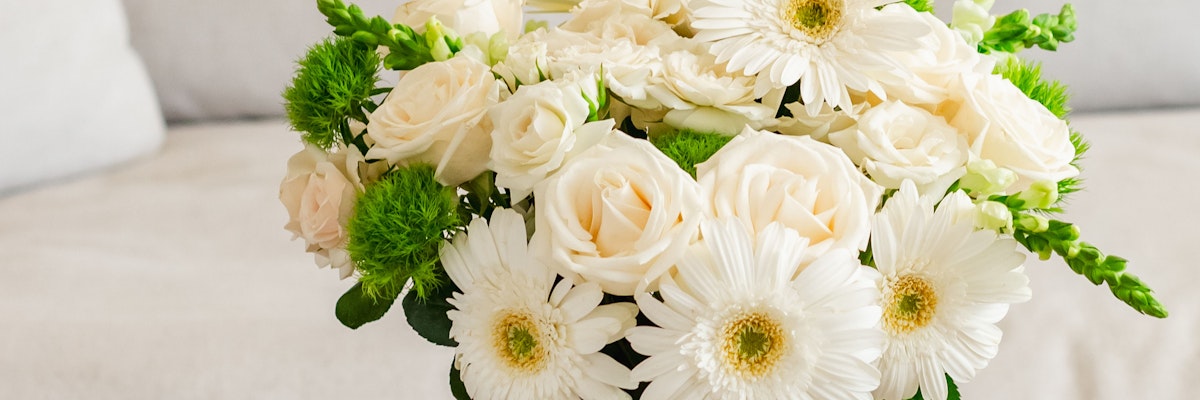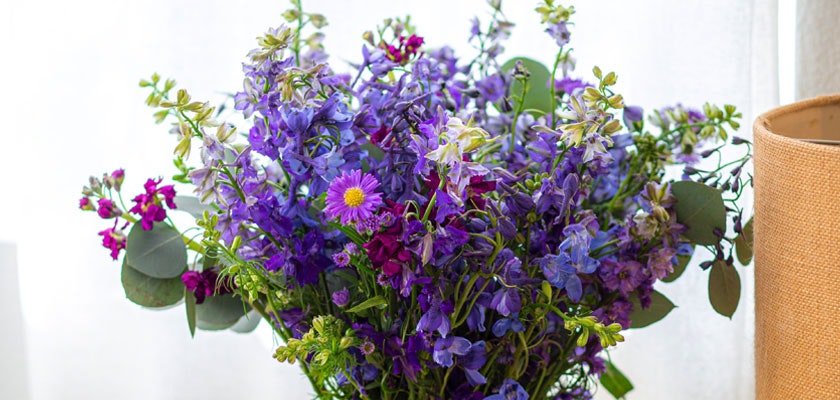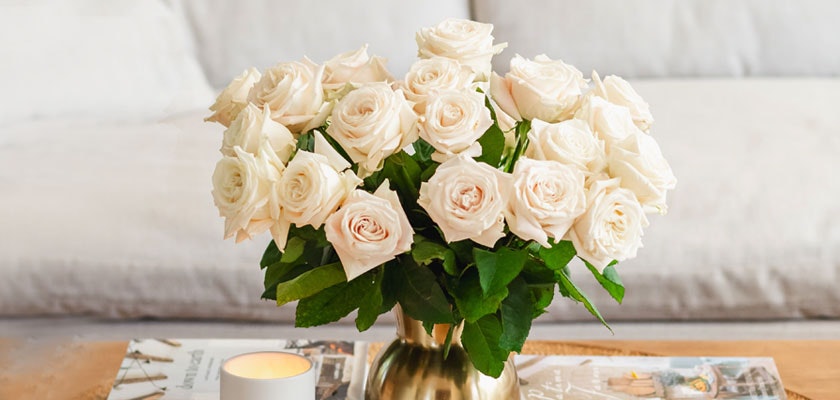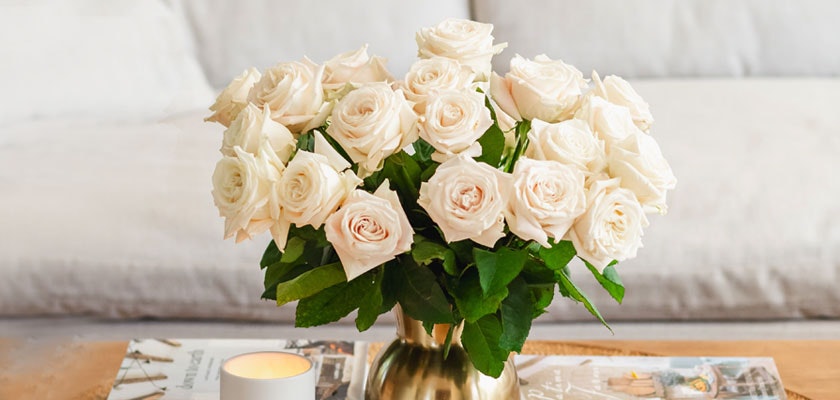The Complete Guide to Sympathy Flowers and Their Symbolism
Flowers have been a universal symbol of comfort and compassion, helping people express emotions that words often cannot. When words fall short, especially during moments of grief, sympathy flowers become a beacon of love and support.
Sympathy Flowers & Their Meaning | When & What to Send
They convey heartfelt condolences in an elegant and respectful way, bridging the gap between the giver and the recipient during difficult times. These blooms are more than just decorative gifts; they are steeped in centuries of tradition and carry profound cultural and symbolic meanings.
The roots of presenting condolence flowers trace back to ancient customs. Flowers were once placed around the deceased to mask odors, but over time, they became a demonstration of respect for the departed. Today, sending flowers during a time of loss is a meaningful gesture that embodies care, remembrance, and a celebration of the life that was lived. Sympathetic gestures like these provide solace, showing those grieving that they are not alone in their sorrow.
Each flower carries its own message of comfort and love. These flower meanings guide us in selecting blooms suitable for expressing sympathy. For instance, lilies symbolize purity and the return of the soul to a peaceful state, making them one of the most popular choices for funerals. On the other hand, white roses signify purity and reverence, offering serenity to those left behind. Understanding the symbolism behind each bloom ensures that the gesture is thoughtful and appropriate.
When choosing sympathy flowers, it’s essential to consider the recipient's culture or religion. Different societies interpret floral tributes in various ways. For example, white flowers are often associated with mourning in many traditions, but brighter-colored blooms may be welcomed in celebrations of life ceremonies. Recognizing these variances ensures your gesture aligns with the family's wishes.
Timing is another critical component of funeral etiquette. Flowers can be sent before or after the funeral service, depending on the situation. Pre-arranged floral tributes at a funeral home or place of worship set a comforting atmosphere. However, sending a bouquet to a grieving family’s home days or weeks later is equally meaningful. It’s a way to remind them that, although the ceremony has passed, your thoughts are still with them.
The arrangement style also plays a role in creating the right tone. Simple, understated bouquets exude grace and humility, while larger sprays or wreaths used at services deliver a formal message of reverence. Whichever you choose, ensure it reflects the sentiment you wish to convey, as sympathy flowers have the power to leave a lasting impression.
This guide aims to provide a complete understanding of condolence floral arrangements, their symbolic meanings, when to send them, and how to ensure your offering is both respectful and thoughtful. By honoring traditions and making informed decisions, you can offer genuine comfort through the language of flowers.
The Language of Flowers in Times of Loss
The language of flowers, or “floriography,” holds a deep connection to expressing emotions, particularly during times of mourning. Each flower holds unique symbolism, making it a powerful tool to convey messages of hope, love, and remembrance for the departed. For those choosing condolence flowers, these meanings offer guidance in crafting a deeply personal and heartfelt sentiment.
Lilies are among the most recognized sympathy blooms, symbolizing the restoration of the soul to a state of innocence and peace. White lilies, in particular, exude elegance and purity, making them a staple in funeral arrangements. Often seen in sprays or wreaths, they embody a sense of tranquility, encouraging the bereaved to find comfort amidst sorrow.
Roses, with their timeless beauty, also hold profound flower meanings when it comes to sympathy gestures. White roses represent reverence and humility, offering solace to grieving families. Pink roses, on the other hand, symbolize gratitude and remembrance, serving as a way to honor the positive impact of the departed. Arrangements with red roses often connote love and respect, particularly for the loss of a close loved one or romantic partner.
Another popular choice for sympathy flowers is chrysanthemums, which are commonly used in funeral arrangements across cultures. While their meanings vary by region, they are generally seen as symbols of death, mourning, and honoring life. White chrysanthemums, in particular, are associated with truth and grief in many European and Asian traditions.
Carnations are both versatile and meaningful, often chosen for their affordability and availability in various hues. Pink carnations convey gratitude and remembrance, while white ones symbolize innocence and pure love. These blooms are often included in mixed arrangements to enhance the emotional tone and fill bouquets with meaningful contrasts of color.
Orchids represent eternal love and beauty, making them a touching gesture when words fall short. These exotic blooms often accompany urns or memorial displays, symbolizing a lasting admiration for the departed. For a personal touch, consider varieties like the elegant Phalaenopsis or Dendrobium orchids to complement other flowers in a tribute.
Furthermore, gladioli convey strength of character and moral integrity. With their tall, spear-like stems, they also stand for sincerity, a fitting metaphor for the enduring impact of the person being honored. Often arranged in traditional sprays, they provide a visual focal point at ceremonies, adding an air of quiet dignity.
By understanding these flower meanings, you not only offer a message of compassion but also pay tribute in a way that resonates with those grieving. This knowledge ensures your bouquet becomes a symbol of support and healing, demonstrating the deep care and thought behind your kind gesture.
When to Send Sympathy Flowers
Timing is paramount when sending sympathy flowers, as it affects how they are received and the comfort they bring. Immediately after the news of a loss, sending a floral arrangement can provide instant solace. Receiving a bouquet during this critical time reminds grieving individuals that they are supported and cared for during their darkest hours. Whether delivered to a funeral home or the family’s residence, this prompt gesture of compassion anchors human connection amidst loss.
However, sending condolence flowers weeks after the funeral can also be a meaningful act. As the intensity of immediate grief settles, and visitors diminish, this thoughtful gesture reminds the grieving family that they are not forgotten and continue to have support. A well-timed bouquet during this phase symbolizes long-term care, gently easing their solitary moments with a message of enduring compassion.
Flowers can also arrive at different destinations depending on their purpose. Funeral homes and places of worship are appropriate for formal arrangements like casket sprays or standing wreaths that adorn the ceremony. Smaller, more personal bouquets are ideal for sending directly to the family’s home, offering a touch of comfort in an intimate setting. Context and appropriateness guide your choices, ensuring that your floral gift arrives gracefully.
Another occasion to send condolence flowers is during anniversaries of the loss or birthdays of the deceased. These small acts of remembrance show the grieving family that their loved one is still in your thoughts. A bouquet of lilies, roses, or chrysanthemums on these commemorative days provides an opportunity to share memories and extend solidarity once more.
Virtual services and long-distance grieving have introduced new scenarios for sympathy gifts. Where physical presence is impossible, sending flowers becomes an even more powerful way to bridge the gap. With services like BloomsyBox.com, you can easily deliver fresh and meaningful arrangements worldwide, ensuring support reaches across distances.
It’s worth noting that cultural customs also influence timing when sending sympathy flowers. Some may prefer flowers only at the time of the ceremony, while others encourage ongoing gestures throughout the mourning period. Being mindful of these nuances fosters sensitivity to diverse traditions, leaving a positive and respectful impression.
Ultimately, flowers are timeless emissaries of care, and sending them at strategic moments brings healing comfort when words might not suffice. From immediate expressions of condolence to thoughtful anniversaries and everything in between, their presence resonates deeply, letting grieving families know you stand alongside them in their sorrow.
Choosing the Right Flowers for Cultural Sensitivity
Cultural and religious customs play an essential role in selecting appropriate sympathy flowers. Across the globe, different groups observe diverse traditions when it comes to funeral practices and the significance of blooms. Understanding these cultural nuances ensures that your gesture aligns with the values and beliefs of the grieving family, showing a deeper level of care and respect.
For many Western cultures, white flowers dominate as they symbolize purity, peace, and eternal rest. Arrangements featuring lilies, roses, or chrysanthemums in white hues are widely accepted as traditional condolence flowers. They are often preferred for their classic solemnity and graceful tone, creating an atmosphere of reverence during a funeral service or memorial.
Similarly, white is the color of mourning in many Asian cultures, particularly in traditions influenced by Buddhism and Confucianism. White chrysanthemums, in particular, are highly regarded in Eastern customs, symbolizing grief, loss, and honor. It’s critical to note, however, that bright-colored flowers, while common in Western celebrations, may not always be appropriate in certain Asian ceremonies, where they might signify festivity.
Hindu and Buddhist cultures often include marigolds or lotus flowers in their ceremonies. These blooms hold deep meanings of spiritual cleansing and rebirth. They are often used in garlands or as part of intricate arrangements designed to honor the deceased’s spiritual transition. Keeping these practices in mind when sending sympathy flowers ensures your gift aligns with the family’s religious beliefs.
Jewish traditions, on the other hand, typically do not include flowers during funerals or mourning periods. Instead, acts of service or charitable donations are considered more fitting. However, sending flowers to the family’s home weeks later, after the initial mourning period has passed, may still be appreciated as a thoughtful gesture.
For Christian funerals, robust floral arrangements often accompany ceremonies, symbolizing hope and eternal life. Lilies, roses, and daisies are commonly seen adorning the altar or casket. By contrast, Orthodox Christian traditions may emphasize light and fragrance, which can influence flower choices.
It’s also important to consider flower colors in secular cultural contexts. For instance, yellow flowers symbolize friendship and humility in some European countries, making them suitable for consoling extended family or close friends. Yet, in other traditions, yellow may not hold the same significance, so taking a moment to understand local practices is valuable.
To ensure cultural sensitivity when selecting condolence flowers, you could use services like BloomsyBox.com. Their expert florists can provide guidance in crafting arrangements that respect and honor the recipient’s heritage and beliefs. Offering this level of thoughtfulness through your floral choice strengthens your message of solidarity and care during times of loss.
Ultimately, choosing flowers with cultural awareness enriches the emotional resonance of your gesture. The thoughtful alignment of blooms with the family’s traditions provides comfort and minimizes any risk of misunderstanding or unintended insensitivity, leaving only the intended warmth and compassion.
Symbolic Arrangements for Close Relatives
When choosing sympathy flowers for close relatives, such as parents, siblings, or grandparents, the arrangement’s design and meaning often take on a deeper level of poignancy. Selecting flowers that represent your connection to the deceased creates a tribute that feels personal and heartfelt. Standing sprays, casket arrangements, and large altar pieces are common choices when remembering a family member. These larger designs serve as central tributes during funerals or memorials, reflecting the significance of the familial bond shared.
For a mother or grandmother, lilies and chrysanthemums often take center stage, symbolizing purity and a well-lived life. Composing these blooms in softer hues, such as whites, pinks, and lavenders, offers a gentle touch of warmth and grace. Personalizing the arrangement with the deceased’s favorite flowers or colors adds an intimate detail that can be a comforting reminder of their unique spirit.
Roses are another profound choice. White roses often symbolize reverence and eternal love, while pink roses add an element of gratitude for their nurturing love and care. Including a single red rose in a predominantly white arrangement can stand for undying love, creating a striking visual that speaks volumes without words. These arrangements provide a deeply meaningful tribute that resonates with the family’s emotions.
For a father or grandfather, the arrangement may include more structured or grander designs. Gladioli stems work well due to their impressive stature, symbolizing strength of character and integrity. These flowers, combined with muted greenery and other elegant blooms, can create a tribute that reflects the deceased’s honor and influence as the family’s pillar of support. Adding elements such as woven foliage can infuse the arrangement with a sense of groundedness and resilience.
Sibling loss carries its own unique depth, as the connection often represents shared childhood memories and unconditional affection. Choosing condolence flowers with vibrant highlights alongside traditional white blooms can express the bittersweet emotions of both mourning and celebration of a life well-lived. An accent of sunflowers or zinnias mixed with lilies might bring a heartfelt reminder of their bright presence and unwavering spirit.
For relatives such as aunts, uncles, or cousins, mixed arrangements are a lovely way to blend tradition with personality. Combining chrysanthemums with carnations or adding touches of unique blooms like lisianthus makes the arrangement stand out while still maintaining a solemn tone appropriate for the occasion. Pairing these with clever greenery creates a tasteful balance between friendship and respect.
Adding personal touches to arrangements sets them apart in a meaningful way. For example, incorporating a small framed photograph of the deceased into the arrangement, or wrapping the bouquet in material that holds sentimental value, will make it more than just a floral tribute. These thoughtful details can enhance the comfort brought by sympathy flowers, transforming them into cherished memories.
Using professional services like BloomsyBox.com ensures you have access to fresh and meaningful arrangements designed for such sensitive moments. Their customizable options allow you to incorporate deeply personal elements into floral tributes, creating something unique and respectful that will leave a lasting impression on grieving family members.
Finding the Right Flowers for Colleagues and Acquaintances
When extending condolences to colleagues or acquaintances, selecting the right sympathy flowers requires a balance of elegance and appropriateness. Unlike close family relations, these gestures tend to follow a more formal tone, reflecting professionalism while still offering heartfelt support. Popular choices such as white lilies, roses, and orchids are timeless options. Their understated beauty conveys purity and calm, making them a reassuring presence in grief-stricken environments.
For work-related condolences, arrangements should err on the side of simplicity. Single-color palettes, such as all-white or soft pastels, exude quiet grace without overwhelming the grieving family. Pairing neutral blooms with light greenery adds a refined touch, communicating support in a considerate way. These arrangements are particularly appropriate for delivery to workplaces or when a larger gesture might feel out of place.
Mixed floral arrangements featuring carnations and chrysanthemums can also serve as a versatile option for acquaintances. Carnations, particularly pink or white, symbolize remembrance and love, while chrysanthemums represent honor and truth. Together, these flowers create a meaningful composition that honors the departed while offering comfort to their loved ones.
Sympathy wreaths or baskets are another excellent choice in professional settings. These display pieces are often seen as gentle yet formal memorials that easily blend with the tone of a workplace or home setting. Additionally, their lasting quality ensures the family has time to appreciate the thoughtfulness of the gesture.
Color plays a critical role in these situations. While white remains the traditional choice, incorporating pale yellow or soft lavender can add warmth to the arrangement, symbolizing hope and tranquility. Avoid overly bright or bold colors, as they may feel at odds with the subdued nature of funerals or sympathy gestures.
Timing also matters in professional contexts. Sending condolence flowers shortly after the announcement of loss is customary, but you could also send them after the funeral. This ensures your support isn’t confined to the immediate period of grief, allowing you to reaffirm your care and respect at a later time when it’s most needed.
For larger companies or organizations, a group arrangement signed by all team members can leave a lasting impression. Collaborating on one large tribute ensures inclusivity, while also creating a meaningful token of collective support. BloomsyBox.com offers customized corporate solutions that can ease the complexity of coordinating such gestures, delivering beautiful arrangements that convey unity and care.
Ultimately, choosing modest yet intentional arrangements for colleagues and acquaintances strikes the perfect balance. Whether sending sympathy flowers directly to the family’s home or presenting them as part of a larger professional tribute, these gestures reflect not just respect for workplace bonds but also a deep compassion for the grieving process.
Sympathy Flower Trends in Modern Funerals
The role of sympathy flowers in modern funerals has evolved with shifting preferences and changing traditions. While classical arrangements like wreaths, sprays, and baskets continue to dominate, newer trends reflect a desire for more personalized and eco-conscious tributes. This section explores how floral gestures are adapting to contemporary mourning practices, offering insight into meaningful ways to express condolences today.
One growing trend is the preference for biodegradable arrangements. Flowers arranged in compostable materials or free from non-recyclable wrappings align with eco-conscious values, making them a meaningful tribute that also honors the planet. Bamboo or moss-based floral frames have become popular as alternatives to synthetic stands, adding a natural and sustainable touch to conventional arrangements.
Themed floral arrangements are another modern innovation. These often incorporate flowers or foliage that represent the departed's interests, passions, or hobbies. For example, a fisherman might be honored with arrangements including lotus flowers or reeds, while a nature lover might receive bouquets featuring wildflowers or sunflowers. This personalization ensures that condolence flowers double as unique reflections of the life being celebrated.
Floral lettering has also found its way into modern funeral practices. Arrangements spelling out words like “Hope” or “Love” offer an immediate, powerful message to grieving families. These letters can be created using roses, lilies, or carnations, with softer tones ensuring the sentiment remains tasteful and respectful.
Color has increasingly taken center stage in modern funeral trends. While white remains the traditional color of mourning, families are now opting for colorful arrangements that celebrate the life lived. Vibrant collections of tulips, roses, and chrysanthemums create an atmosphere of remembrance and hope rather than one of somber mourning. These arrangements, labeled as “celebration of life” tributes, have become particularly common in more contemporary services.
The ways flowers are presented has also diversified. From delicate hand-tied bouquets to cascading installments or even floral frames surrounding photographs, the creativity in modern arrangements knows no bounds. Services like BloomsyBox.com excel at providing customizable creations that cater to these unique preferences, ensuring heartfelt moments are honored through beautiful, professionally designed pieces.
Virtual funerals, brought about by necessity, have also influenced how flowers are sent. Many families unable to gather in person now rely on floral deliveries as a way to maintain tradition. Sending sympathy flowers to be displayed prominently during virtual services ensures the sentiment resonates, no matter the physical distance.
At the heart of these evolving trends is a desire to add deeper personal connection to floral tributes. Modern families seek goodbye gestures that speak intimately of the departed, opting for arrangements that feel bespoke and unique. Whether traditional or contemporary, carefully chosen flowers continue to offer solace during times of loss, reflecting both timeless values and modern sensibilities.
Sympathy flowers offer an extraordinary way to extend care and compassion during the most difficult of times. These thoughtful arrangements transcend words, delivering powerful messages of love and support when they are most needed. Just as no two individuals are alike, no two floral gestures should be either. By understanding the flower meanings and symbolism behind each bloom, you can create a tribute that genuinely honors the departed and comforts their loved ones.
Selecting and timing your condolence flowers with care ensures your gesture is both respectful and impactful. From classic white lilies that radiate purity to carnations that express heartfelt remembrance, there’s a flower for every sentiment. And in cases where cultural customs or religious traditions come into play, taking the time to understand those nuances makes your offering even more significant.
Modern trends within the realm of funeral etiquette demonstrate that sympathy flowers can also reflect personality, sustainability, and individuality. The growing demand for personalized tributes, biodegradable materials, and vibrant arrangements showcases how even the simplest blooms can evolve into extraordinary messages of love.
For those seeking the perfect expression, a reliable sympathy flower bouquet delivery service like BloomsyBox.com offers unparalleled support. With their expertly crafted arrangements, eco-friendly practices, and international reach, they provide an easy, respectful way to honor the memory of the departed. Explore options tailored for your needs by visiting their website; click here to start crafting your meaningful gesture.




